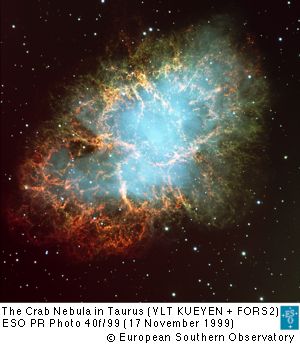
Information based on Encyclopaedia Britannica, 15th edition, 1994:
Novas and supernovas are exploding stars. The explosion is indicated by a rapid increase of luminosity, which can make even very weak stars visible for the naked eye. This explains their name, which is derived from the Latin word for "new" (hence the alternate - Latin -plural form novae).
Novas are thought to occur mainly in double-star systems in which a red giant and a white dwarf revolve around each other. When the white dwarf is close enough to the red giant to attract matter from the red giant's atmosphere into its gravitational field this results in a nuclear explosion and ejection of gases. This process can repeat itself every 1,000 - 10,000 or even after 100,000 years. When it occurs the luminosity increases up to 100,000 times within a matter of hours and remains at that level for days or weeks before returning slowly to its old level.
Supernovas have a similar appearance, but the increase in luminosity is millions or billions of its level before the explosion. A supernova explosion is the end of the star. It often throws huge amounts of matter (equivalent to several suns) into space with such a force that the during its existence the supernova outshines its home galaxy completely.
Stars shine through the release of energy from nuclear fusion. When a massive star (of a mass equivalent to at least eight suns) has converted all lighter elements into heavier and heavier elements there comes a point when the nuclear process no longer produces but absorbs energy. The heavy elements then begin to be pulled inward under the star's gravity, and its core is compressed into a solid, rapidly spinning mass of neutrons. Its mass is so dense that on Earth an amount the size of a sugar cube would weigh billions of tons.
As more material falls towards the solid core it rebounds and produces a shock wave, which blows away the star's atmosphere. As a result space is bombarded by heavy metals, X-radiation and cosmic rays.
Seven supernovas were observed before 1604; they were seen in 1054 BC, 185 AD, 393, 1006, 1181, 1572 and 1604 (Kepler's star). Since then improved astronomical instrumentation has allowed scientist to record hundreds of supernovas. The closest of these was observed on 24 February 1987 in the Large Magellanic Cloud at a distance of about 50,000 parsecs from Earth. 50,000 parsecs are equivalent to 163,000 light years, so this supernova exploded 163,000 years ago.
The NASA High Energy Astrophysics Science Archive Research Center (HEASARC) gives the following information:
"While many supernovae have been seen in nearby galaxies, they are relatively rare events in our own galaxy. The last to be seen was Kepler's star in 1604. This remnant has been studied by many X-ray astronomy satellites, including ROSAT. There are, however, many remnants of Supernovae explosions in our galaxy, that are seen as X-ray shell like structures caused by the shock wave propagating out into the interstellar medium:

Another dramatic supernova remnant is the Cygnus Loop":

(NASA HEASARC, 2003)
The Crab Nebula, filled with mysterious filaments, is the result of a star that was seen to explode in 1054 AD. This spectacular supernova explosion was recorded by Chinese and (quite probably) Anasazi astronomers of North America. The filaments are mysterious because they appear to have less mass than expelled in the original supernova and higher speed than expected from a free explosion. In the picture below, taken from a Very Large Telescope, the colour indicates what is happening to the electrons in different parts of the Crab Nebula. Red indicates the electrons are recombining with protons to form neutral hydrogen, while blue indicates the electrons are whirling around the magnetic field of the inner nebula. In the nebula's very centre lies a pulsar: a neutron star rotating, in this case, 30 times a second. (NASA, 2003)

NASA (2003) Astronomy Picture of the Day of 14 September 2003
http://antwrp.gsfc.nasa.gov/apod/ap030914.html (accessed 24 November 2003).
NASA HEASARC (2003) Supernova
http://heasarc.gsfc.nasa.gov/docs/snr.html (accessed 24 November 2003).